Comet Pons-Brooks, Barnard Objects,
Quasar HS 0624+6907
Posted: 5 March 2024
|
Open: Monday, 4 March 2024, 1807 MST Temperature: 70°F |
Session: 1946 Conditions: Mostly clear, breezy |
Equipment:
12" f/8 LX600 w/StarLock
2" 24mm UWA eyepiece
Focal reducer
12x50 binoculars
Camera:
D850 DSLR
Shortly after opening the observatory, this bunny came to visit.
Click to view video
1825 MST: Sunset. Calm now.
1826 MST: LX600 ON, StarLock OFF, High Precision OFF.
1828 MST: Viewed Jupiter, 102X. Three Galilean Moons were visible in the bright twilight sky.
1840 MST: Viewed Jupiter, 102X. All four Galilean Moons were now visible.
I then prepared the D850 DSLR for imaging later.
Viewed the double star Almaak (Gamma Andromedae), 102X. The stars looked very similar to the double star Albireo, one yellow and one blue.
1900 MST: Wi-Fi ON.
Used SkySafari Pro 7 on the iPhone 15 Pro Max to GOTO Comet 12P/Pons-Brooks.
1902 MST: The comet was faintly visible in the still bright twilight sky, 102X. Some clouds were approaching from the west.
Mounted the D850 DSLR at prime focus + focal reducer, focused on the star Shedir, locked the 12" primary mirror, and used the iPhone to slew back to Comet 12P/Pons-Brooks.
1915 MST: StarLock ON.
I took some images of the comet in the twilight sky in case the clouds interferred as the sky became darker.
1924 MST: Wi-Fi OFF.
1926 MST: Viewed Comet 12P/Pons-Brooks, 12x50 binoculars. The coma was visible, but no tail was seen. The comet was not naked eye visible. The Zodiacal Light was visible in the western sky.
1934 MST: Resumed imaged Comet 12P/Pons-Brooks. This is a StarLock autoguided 30 seconds, ISO 5000, exposure. The nucleus is overexposed to bring out the tail.
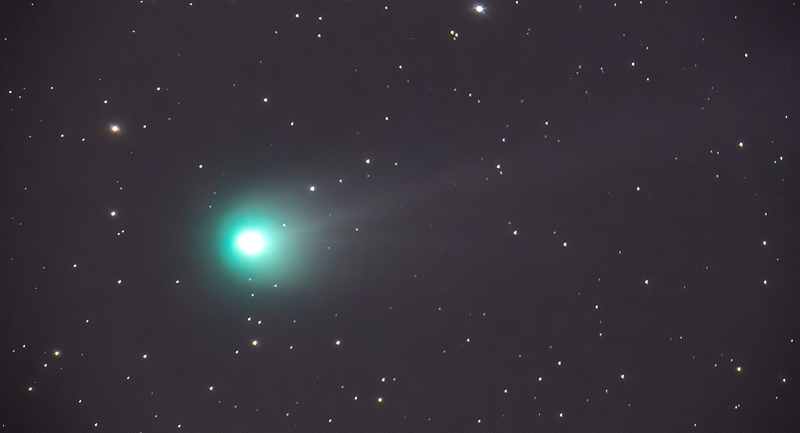
Next, I reoriented the DSLR to have North at the top and rechecked the focus.
1949 MST: High Precision ON. I resumed imaging for my Barnard Objects Project.
These images were StarLock autoguided, 2 minutes, ISO 3200.
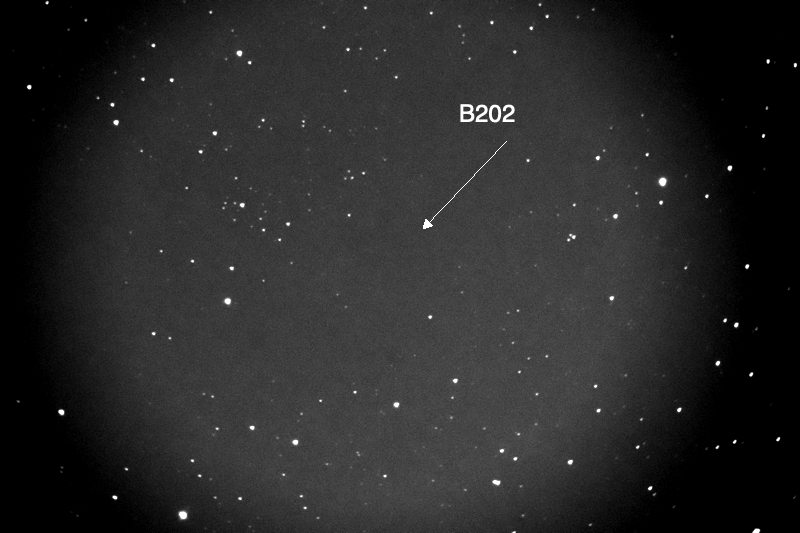
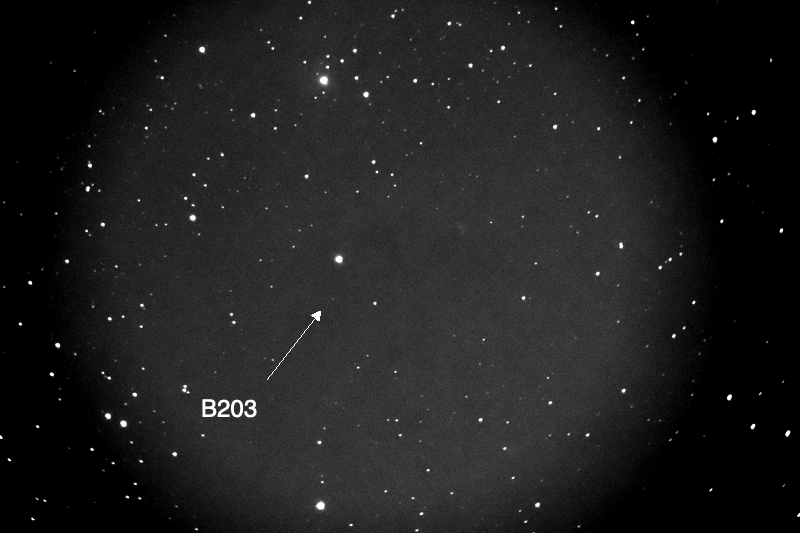
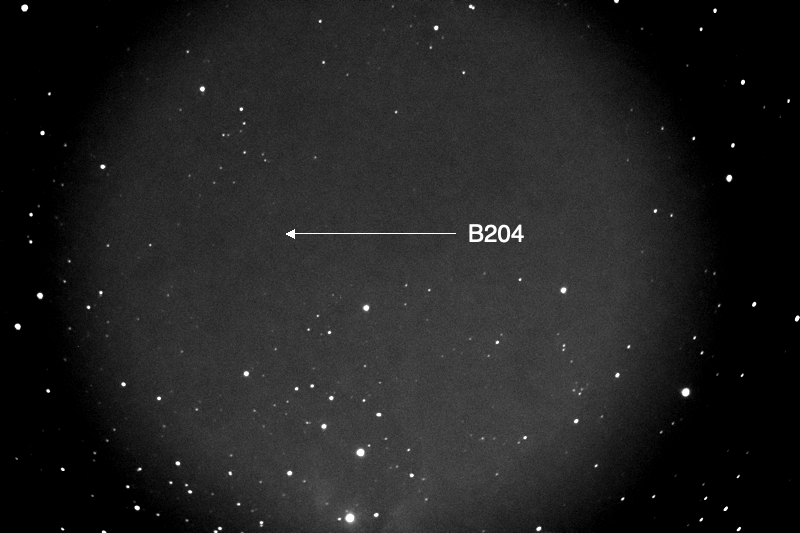
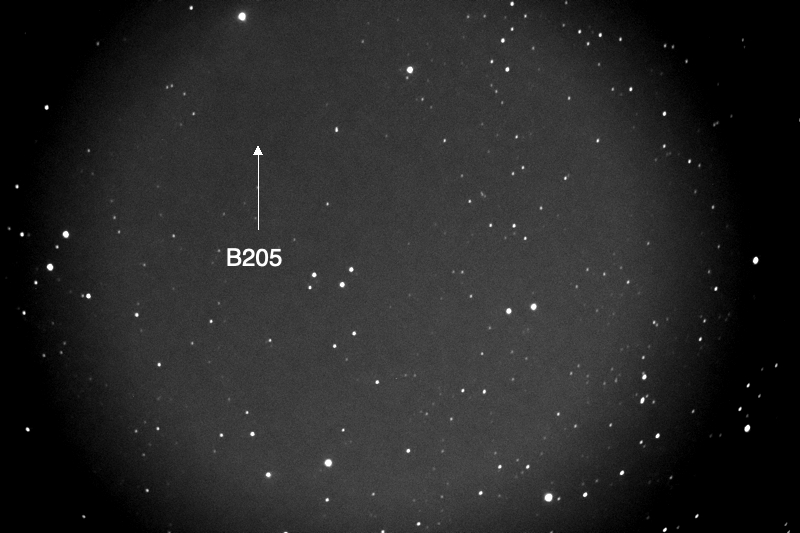
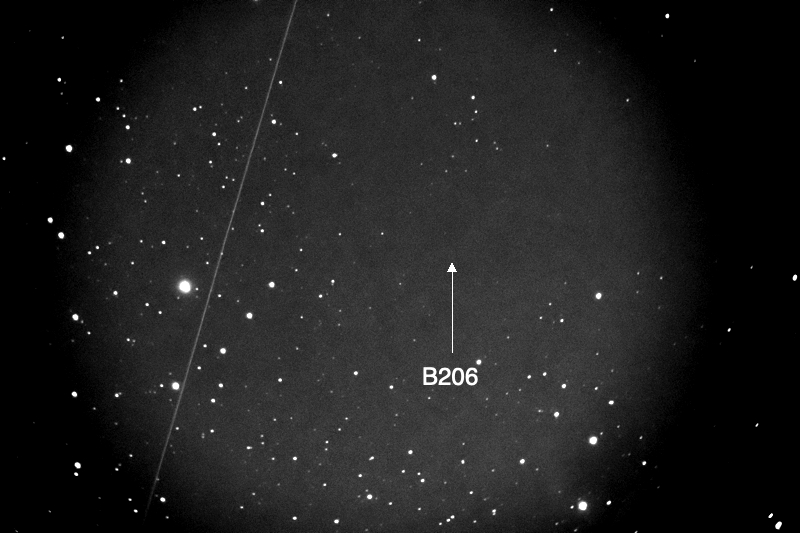
I then imaged Quasar HS 0624+6907 for my Quasar Astrophotography Album, StarLock autoguided, 5 minutes, ISO 6400. The Quasar is Mag. +14 at a distance of 4.56 Billion Lightyears.
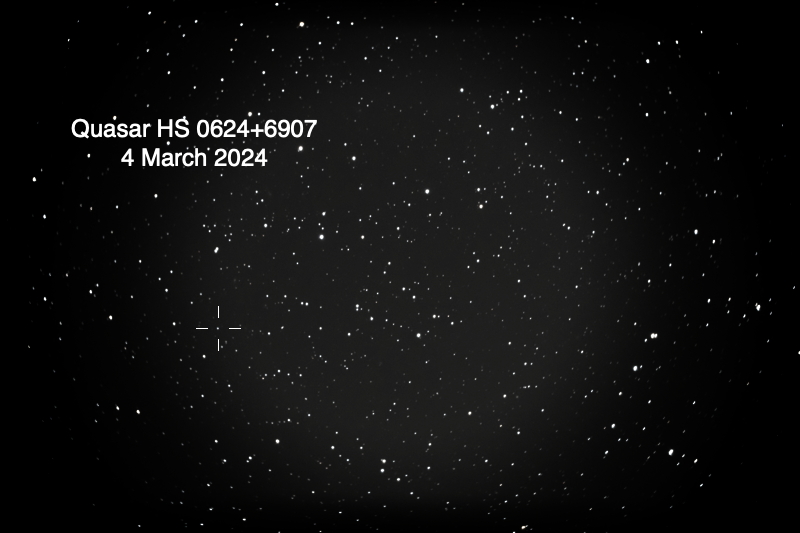
2032 MST: StarLock OFF.
Clouds were now in much of the sky.
2035 MST: LX600 OFF.
|
Close: Monday, 4 March 2024, 2049 MST Temperature: 50°F |
Session Length: 2h 42m Conditions: Mostly cloudy |
Comments are welcome using Email. Please read the Email Etiquette guidance.
Cassiopeia Observatory Home Page
Copyright ©2024 Michael L. Weasner / mweasner@mac.com.
URL = http://www.weasner.com/co/Reports/2024/03/05/index.html
